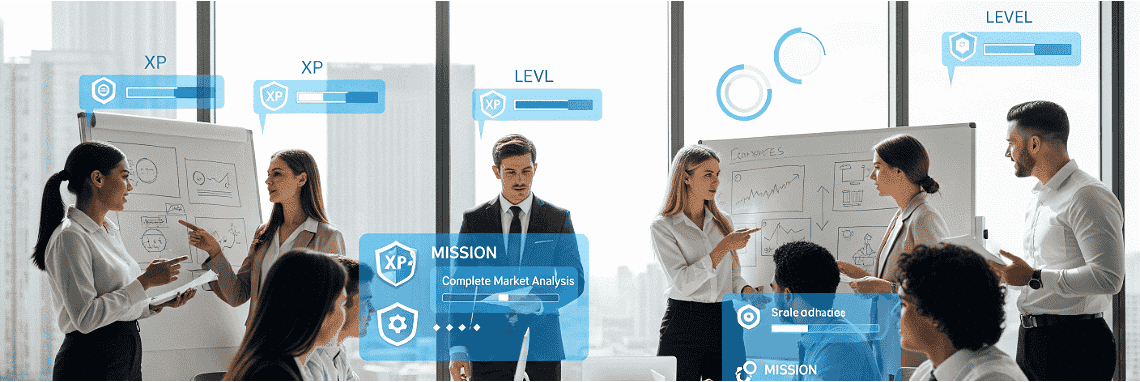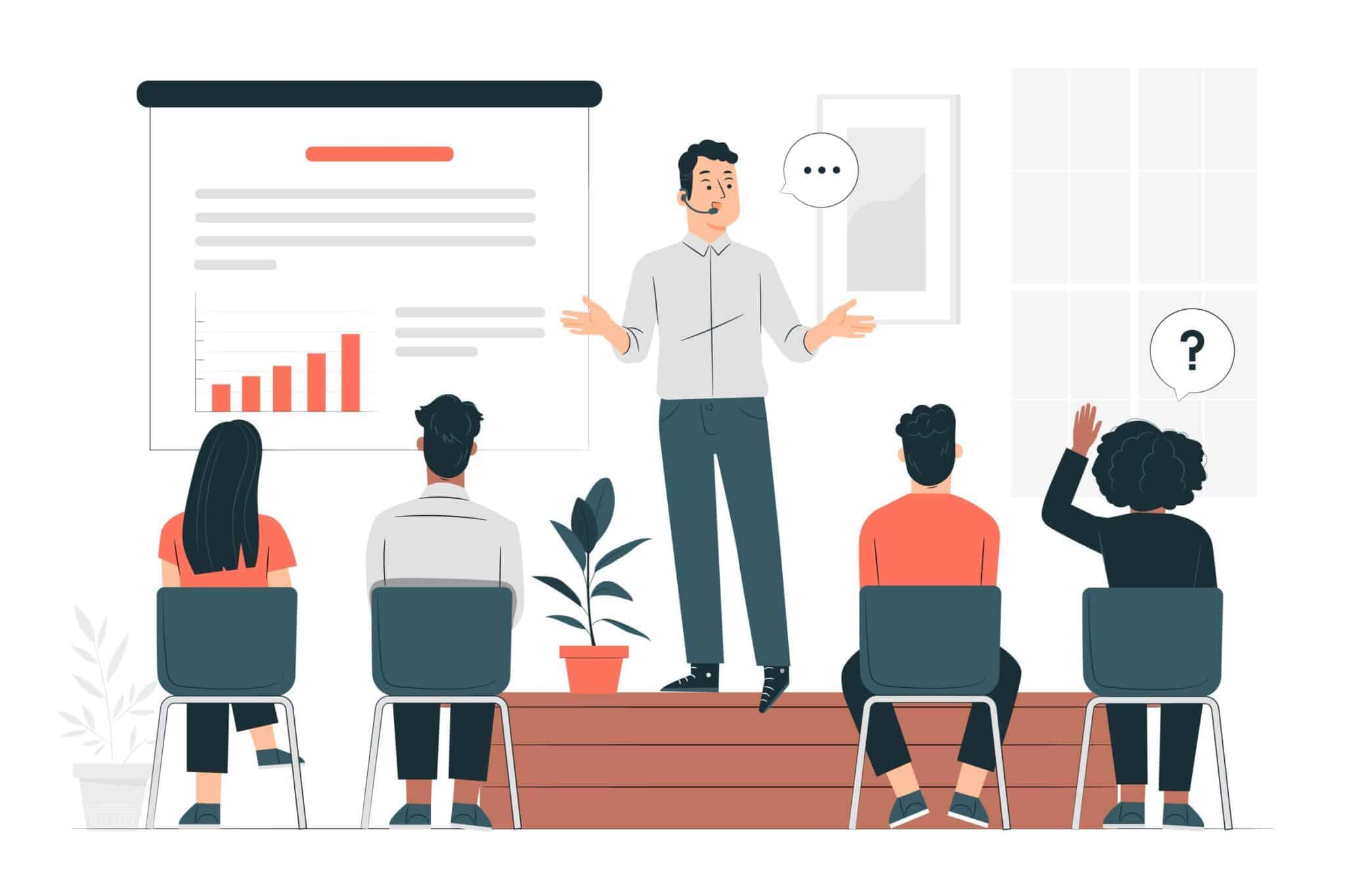In the world of learning and development, “Training” and “Facilitation” are often used interchangeably. However, in our experience at FocusU, these two approaches are vastly different in practice and impact. Both play a vital role in the development of individuals and teams, but the way they deliver outcomes, the participant mindset they require, and the role of the learning leader differ significantly.
Let us explore this distinction more deeply.
The Challenges of Traditional Training
Table of Contents
It’s not easy being a Trainer. The challenges are many:
- Many people often don’t know that they don’t know (Unconscious Incompetence).
- A few people know they don’t know (Conscious Incompetence), but remain skeptical of how much training can actually help.
- Only a select few are mentally ready to put in the effort to develop new skills (Conscious Competence).
- And as with all new skills, only a few eventually reach the stage of Unconscious Competence.
In our sessions, we often see this play out. Some participants come in with a closed mindset, convinced they have nothing new to learn. Others attend training as a box-ticking exercise. And then there are the rare ones who embrace the opportunity and commit to building new capabilities.
But here’s the thing we have noticed consistently over the years: the mindset people bring into the room matters far more than the materials or content itself. If you think you already know it all, you probably won’t get much from the session. If you think you’re too busy to learn, it’s only a matter of time before that mindset limits your growth.
Related Reading: How To Nurture Growth Mindset In Your Organisation?
One truth that surfaced for many of us who transitioned from corporate roles to learning facilitation is this: participants often expect trainers to be repositories of knowledge. This can lead to a very trainer-centric experience, where the onus of learning lies heavily on the trainer. The trainer speaks, the participants listen. The trainer delivers, the participants receive. It’s a 70:30 speaking ratio. Sound familiar?
Now, contrast that with facilitation.
My Shift from Training to Facilitation
After years of delivering training programs in IT sales, I made a significant shift in my professional journey. I moved from being a Trainer to becoming a Facilitator.
At first, I assumed it would be an easy transition. After all, I had plenty of experience, confidence in public speaking, and subject matter expertise. But the first team-building session I co-facilitated (with fresh engineers at a corporate offsite in Nahan) changed my perspective entirely.
I realized then: training and facilitation are two different worlds.
The Essence of Facilitation
Whereas training is about delivering content, facilitation is about creating space. Space for ideas. Space for conversations. Space for people to discover their own insights.
Facilitation involves guiding a group to explore, reflect, and co-create their learning. It shifts the spotlight from the ‘expert’ at the front of the room to the collective wisdom within the room. In a well-facilitated session, the participants talk more than the facilitator – ideally in a 70:30 ratio.
In our experience, facilitation demands deeper presence. It’s not about having all the answers; it’s about asking the right questions. It’s not about controlling the conversation; it’s about guiding it toward meaningful insights.
As we often say at FocusU, “The answers lie in the room.” The facilitator’s role is to help people find those answers.
Related Reading: Facilitating with Excellence
Experiential Learning: Where Facilitation Shines
A core tenet of our facilitation approach is experiential learning. We draw from the Kolb’s Experiential Learning Cycle (Concrete Experience > Reflective Observation > Abstract Conceptualization > Active Experimentation) to design sessions that are not just interactive, but deeply impactful.
Whether it’s through a team-based activity, a simulation, or a real-time problem-solving challenge, the idea is to let participants experience something first, reflect on it, and then draw connections to their workplace behaviors.
In our sessions, we often remind participants: “What you do in play is often how you show up at work.”
Stuart Brown, founder of the National Institute for Play, echoed this beautifully when he said, “The way you play is the way you work.”
We have seen firsthand how laughter-filled, high-energy activities can give rise to profound conversations around trust, communication, leadership, and collaboration.
Related Reading: How To Learn Facilitation?
Key Differences Between Training and Facilitation
Let’s summarize the key distinctions we see:
| Aspect | Training | Facilitation |
| Role of leader | Content expert, instructor | Guide, coach, enabler |
| Participant mindset | Passive, receptive | Active, exploratory |
| Speaking ratio | Trainer 70% : Participants 30% | Facilitator 30% : Participants 70% |
| Core method | Lecture, presentations | Experiential activities, dialogue |
| Ownership of learning | With the trainer | With the participants |
| End goal | Knowledge transfer | Self-discovery and application |
This shift doesn’t mean one method is better than the other. In fact, in our experience, both are necessary.
There are times when training is the most effective method – particularly when it comes to delivering technical knowledge, regulatory updates, or introducing a new product or process.
Facilitation, on the other hand, works best when you want people to reflect, align, and own their transformation. It’s especially effective for areas like team dynamics, leadership development, change management, and innovation.
Related Reading: The Invisible Facilitator
Why This Matters in Today’s L&D Landscape
In today’s VUCA world, where change is constant and complexity is high, the ability to foster ownership of learning is invaluable.
We’ve noticed that in high-performing organizations, there is a growing emphasis on facilitation-based approaches for leadership development, cross-functional collaboration, and cultural transformation.
Learners are no longer satisfied with being passive recipients. They want to be heard. They want to explore. They want to co-create.
And this is why facilitation is more relevant than ever.
Related Reading: What is the difference between training and facilitation?
Final Thoughts: A Personal Transformation
For me personally, this journey from being a Trainer to becoming a Facilitator has been nothing short of transformative. I no longer feel the pressure to “know it all.” I now focus on listening, asking powerful questions, and holding space.
It has also shifted the energy in the room – from one-directional monologues to multi-directional conversations. And those conversations, we have seen, are where the real learning happens.
So the next time you plan a session for your team or organization, ask yourself: Do I need a Trainer? Or do I need a Facilitator?
Or maybe, just maybe, do I need a bit of both?
We’d love to hear your reflections too. What’s been your experience with these two modes of learning? And how have you seen them impact your team’s development?
Let’s keep learning, together.
If you’re interested in exploring how facilitation can enhance learning outcomes in your organization, reach out to us. We’d be happy to co-create a journey with you!
Related Reading: FocusU’s Approach to Facilitation








